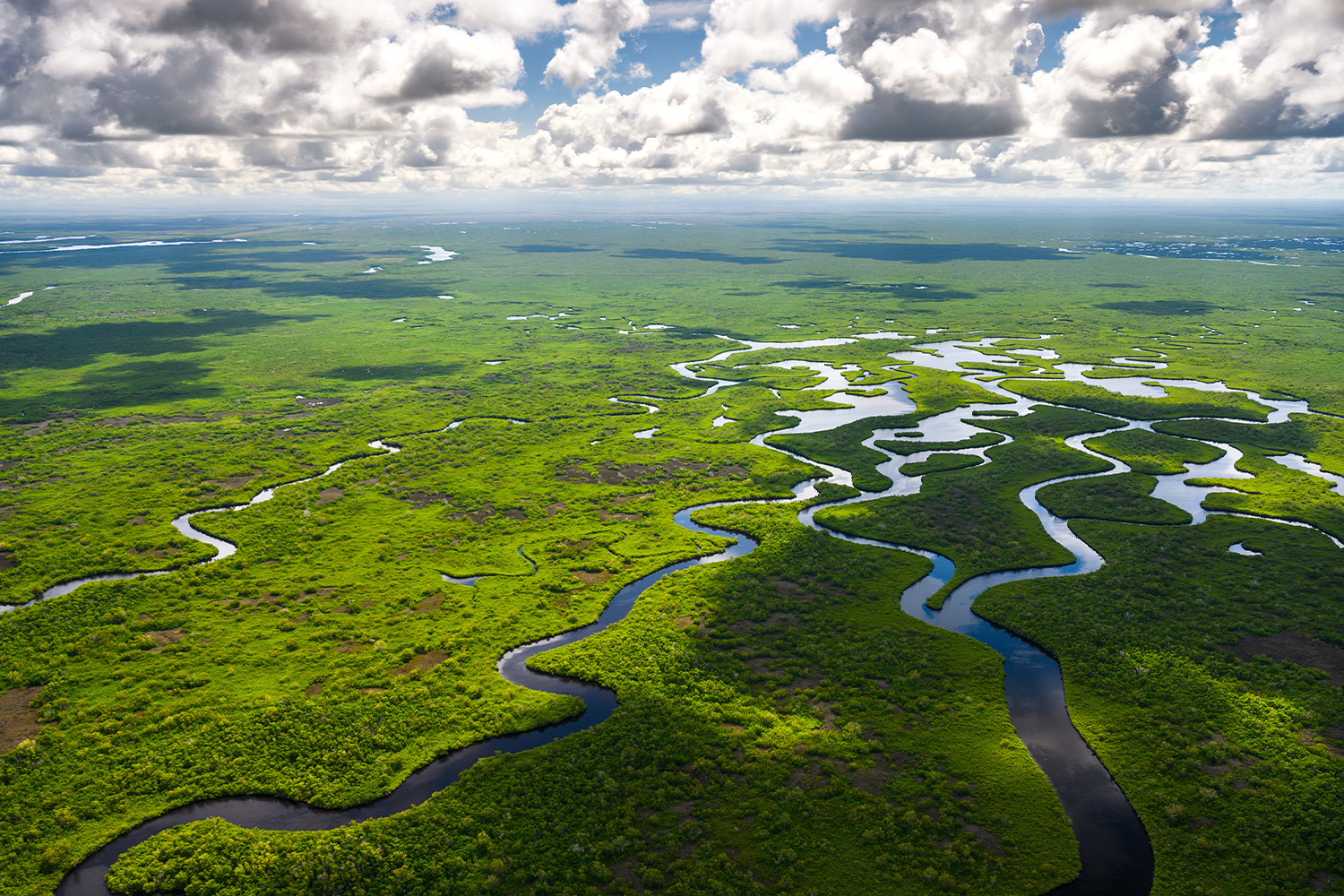Florida boasts three national parks, all an easy drive from Miami. The largest, Everglades National Park, was dedicated on December 6, 1947 by President Harry Truman, who had his “Little White House” in the nearby Florida Keys. It spans 1.5 million acres of wetland and has been designated a World Heritage Site and an International Biosphere Reserve.
But before it was a national park, Seminoles and pirates roamed there, and its sprawling expanse was only surveyed in 1883. In the early 1900s, the area was dredged to turn it into farmland, and later, mangroves were cut and canals were dug to make it accessible to visitors via the Tamiami Trail, which still bisects the park.
“At that time, tourist camps popped up in Miami and along the Tamiami Trail,” says Carrie Dilley, marketing and advertising coordinator for Florida Seminole Tourism. “For over a hundred years, the Seminoles have been involved in tourism, and it really kind of sprung from the need to diversify what they were doing in order to survive.”
“There are no other Everglades in the world,” says Marjory Stoneman Douglas in her book The Everglades: River of Grass, which is considered to be region’s essential history. In her research, the journalist, author and conservationist learned about the creatures that call the high grassland home, including herons, egrets, otters, muskrats, alligators and deer. The park also boasts 120 species of trees and 25 varieties of orchid.
The Founding of Everglades National Park
In 1928, developer Ernest F. Coe proposed the land become a national park and it took another 13 years for the boundaries to be defined. The park has three distinct entrances and five visitors centers, where concessioners operate tram and boat tours and you can pay your admission fee.
The visitor experience varies based on the time of year, dry or wet, but travelers can take part in birding, biking, kayaking and ranger programs. There’s a Cold War-era missile base open for tours throughout the year. Guides can also take you “slogging,” or nature walking through the knee-deep marsh. Many travelers explore the Everglades via airboat — a flat-bottomed boat with a massive fan that propels it across the water — and spotting alligators along the way is one of the park’s great thrills, especially for kids.
Indigenous Tourism and Small Towns
The Seminole Tribe has its own offerings in the Everglades, which allows travelers to learn about the tribal history and support its economy. The tribe’s Big Cypress Indian Reservation operates the Billie Swamp Safari, Ah-Tah-Thi-Ki Museum and Big Cypress RV Resort & Campground.
On the western side of the Everglades, visitors can visit the Old Florida towns and former trading posts where pioneers settled. Step back in time at the one-room post office in Ochopee or learn about the cryptids spotted in the area at the Skunk Ape Research Center (the skunk ape being Everglades’ answer to Bigfoot). The Ten Thousand Islands area also has fishing and boat tours.
A Perfect Weekend in the Keys: Scuba Diving, Sport Fishing and a Ride on the “African Queen”
To catch or swim with the fish? Our island itinerary allows for it all.Environmental Concerns in the Everglades
Today, nearly 40 threatened and endangered species live in the Everglades, including the Florida panther and the West Indian manatee. Nonnative animals have inundated the area, causing great harm to the native species. Organized Burmese python hunts have taken off as a way to combat the growing population, including this year’s record-breaking 215-pound snake.
Local tribal leaders have also worked to protect the important ecosystem and combat climate change through the Heritage and Environment Resources Office (HERO). The group has teamed up with federal agencies on Everglades restoration projects, particularly maintaining water quality in the western portion.
Where to Stay in the Everglades
Unlike with some of the parks out west, the Everglades are relatively rustic. There aren’t grand lodges with plentiful dining options. Instead, travelers will need to bring most of their own food and stay at one of the park’s two campgrounds.
Long Pine Key Campground, while only open from November to May, has RV and tent sites available by reservation as well as some that are first come, first served. Travelers can enjoy ranger programs at the amphitheater to learn more about the park.
This year, the Flamingo Lodge and Restaurant at the new Flamingo Visitor Center will open. Located a short drive from one of the park entrances, the lodge has 24 one- and two-bedroom suites with kitchenettes and balconies overlooking the water, all made from converted shipping containers. The lodge has a restaurant and eco-tents at the campground. The complex also offers boat tours and kayak rentals and there’s a marina for arrivals by water.
There are also wilderness camping areas where a permit is required, available at the visitors centers. Campsites include areas in the forest, on the beach and even on elevated platforms called “chickees.” The majority are only accessible by boat but some can be reached on foot.
This article appeared in an InsideHook newsletter. Sign up for free to get more on travel, wellness, style, drinking, and culture.
